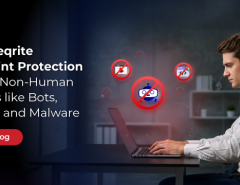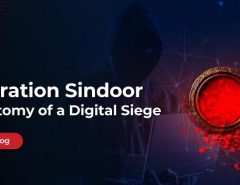It wouldn’t be wrong to assume that login credentials and other confidential user-specific insights are the most frequently compromised data sets, extensively targeted by the malicious parties. Since 2017 witnessed hackers breaching 711 million users records; thereby accessing around 50 million specific passwords, it is evident that business requires excellent and futuristic authentication techniques for keeping the break-ins at bay. This is why, majority of organizations are increasingly emphasizing on multi-factor authentication that renders an additional line of defense against the lingering credential thefts. However, there is a lot more to the Multi-Factor Authentication (MFA) than what meets the eye.
Understanding Multi-Factor Authentication
The entire concept of MFA is based on a simple fact that an attempted log-in needs to be secured for safeguarding the confidential information. While some individuals prefer setting a password for securing the premises, adding multiple factors into the security framework is desirable by organizations. Two-Factor Authentication (2FA) is the most common type of MFA implementation that pairs two types of distinct evidences for validating the entire process of log-ins. However, there are many factors associated with the same and every service provider have a definite way of targeting the security requirements. Multi-Factor Authentication framework brings forth three types of distinctive evidences, including Knowledge, Inherence and Possession.
Knowledge: The Basic 2FA Metric
This two-factor authentication evidence concerns the confidential details that are known to the specific user. A password is probably the best example of knowledge-centric evidence as it can be created at the discretion of an individual. In most cases, knowledge is still the primary form of multi-factor authentication evidence as companies prefer using the same as the first line of defense against the threats.
Possession: Another User-Specific Metric
Possession-specific evidence refers to something that an individual or a company owns. Commonly, this metric includes relevant keys with authentication systems residing on gadgets like cellphones. Professional Credential Service Providers (CSPs) offering 2FA or MFA often resort to time-sensitive details where the passwords are generated in the form of OTPs and TOTPs. Authentication via possession is a pretty nifty technique of securing credentials, commonly followed by banking organizations and other financial firms.
Inherence: Relying on Biometrics
While hackers can still decipher the passwords and break into the discrete devices, inherence-specific evidence can be excruciatingly difficult to bypass. Be it thumbprints, retina scans and other biometric essentials, Inherence is something that cannot be masked and deciphered unless the individual is willing to compromise on confidentiality.
Read More: Importance of user authentication in network security
Deploying Multi-Factor Authentication
It is important to understand that not all MFA deployment strategies are the same. Some organizations prefer going with the older SMS-centric authentication techniques which are still vulnerable but obviously better than having nothing on-board. Then there are the likes of Google Authentication which come forth with a more secured form of MFA that relies heavily on possession-specific evidence i.e. Seed keys and Time-Based ‘One Time Passwords’. Lastly, some companies are becoming increasingly vigilant against the attack vectors and are thus relying heavily on the hardware instead of exposing the SMS-centric interfaces.
The MFA deployment may vary based on different industries and different companies. For example, a company supporting BYOD may necessarily need to embed possession-specific authentication techniques which are in sync with employee devices. In an industrial setup, the whole deployment process needs to be taken up with the board. From the practical standpoint, proper industry-wide application is only possible when the MFA concept doesn’t face any kind of interference from the staff. Moreover, there has to be a prototype installed in the form of a pilot program before rolling out a full-blown MFA setup.
How Seqrite helps Companies with Multi-Factor Authentication?
Seqrite offers Multi-Factor Authentication across its products and services. Two-factor authentication techniques are commonly integrated with most processes for securing the confidential user credentials. Apart from the tried and tested evidences like knowledge, possession and inherence, Seqrite also features time and location as important authentication metrics. The Endpoint Security solution offered by Seqrite evaluates and mitigates risks associated with any fraudulent transactions.
It is important to understand that companies are always under threat of data breaches and thus it is extremely crucial to safeguard user credentials. Multi-factor authentication helps organizations up their defense against identity thefts with minimal investment and effort.
As an IT security partner for your business, Seqrite provides comprehensive endpoint security from advanced cyber threats. To know more, visit our website or




